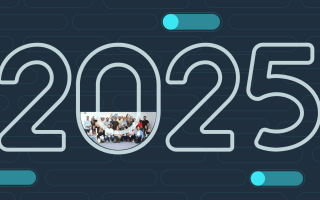
The Challenges of Cybersecurity for Financial Institutions

The pandemic has brought many challenges into the cyber world. And with the main goal of most cyberattacks being acquiring money, financial institutions are often a target for such felons.
Because traditional financial institutions are non-tech, it can be more difficult to make the right cybersecurity choices without any professional aid. That’s why such solutions as digital business growth support services exist. To learn about such measures and their benefits, Cybernews invited Ricardo Costa, to talk about the subject.
How did the idea of LOQR come about? What has the journey been like?
LOQR was born from a dream that became an idea, and this idea was focused on our vision: empowering digital lives and delivering value to our clients, traditional banks through digital solutions so they could become more competitive and keep up with the market trends, especially regarding digital transformation in the financial sector. Over the years we’ve evolved our product to an AI-powered journey-as-a-service platform, fully regulation-compliant, where banks can use a set of pre-build digital journeys, such as online account opening, customer data update, or proof of life, to accelerate their digital transformation and offer customized and fully digital solutions to their customers.
Can you introduce us to your Journey-as-a-Service platform? What are the main challenges it helps navigate?
As I mentioned before, the main goal of our platform is to provide the traditional banking sector with the best tools to accelerate their digital transformation, optimize their operation while reducing costs, and increase their base of customers. Our platform allows banks to use what we call Journeys-as-a-Service (JaaS) and integrate them into their systems, so that their customers can experience fully digital journeys, such as online account opening, customer data update or online access recovery, always focused on the customer experience, in a very easy, compliant, secure, and digital way. The platform is completely modular and white label, so the integration runs smoothly. It is also based on AI & ML to guarantee an audit-proof solution.
What technology do you use to verify identities without compromising the user experience?
We use Artificial Intelligence and Machine Learning techniques to ensure the validation, especially the authenticity, of the presented documentation during each journey. Additionally, we can perform a series of verifications, such as personal details, and collect biometric customer data. From the customer’s perspective, the journey is smooth, easy, and simple. In the back office, however, where all the magic happens, the platform is running all the required validation and verification steps to make it compliant with the applicable regulation.
How do you think the recent global events altered your field of work?
The increased digitization of processes was already expected to happen to many industries, including the banking sector. The latest global events, such as the Covid-19 pandemic, helped accelerate those processes considering that more people were searching for digital and simple solutions to perform day-to-day activities, such as updating their data in a bank account, for example. So, for our field of work, it was a major change because more traditional banks were looking for solutions that could help them unlock their digital potential and accelerate this digital transition and compete with the neobanks that already offered digital solutions to their customers.
What are the most common challenges that you notice companies run into on their digital transformation journey?
The most common challenge for the traditional banking sector in the path of digitalization is to find a solution that is complete and easy to implement. After all, banks, traditionally, are non-tech companies and are not required to have the knowledge and availability to implement and combine different APIs to create a single digital journey. That is one of LOQR’s greatest differentials. We deliver an end-to-end turnkey digital solution, easy to integrate and with ready-to-use journeys that meet all the financial regulations and legal requirements.
What cyberthreats surrounding banking do you find the most concerning at the moment?
The increase in fraud, application cloning, and data stealing is a big concern for financial institutions. There’s an urgent need for effective Know Your Customer (KYC) and Know Your Business (KYB) solutions that reinforce maximum security of operations and ensure that operations subject to strong regulations are safe.
Even though digital identity is becoming more commonplace, there are still some misconceptions around it. Which ones do you come across most often?
A common misconception around the topic is that digital identities are less safe than the traditional methods when the security features brought by digital IDs provide much more security to users than traditional ones. A good example of that is the European Digital Identity, which aims to reduce bureaucracy, transaction costs, and time in the relationships between individuals, entities, and governments by providing a single register usable in all member countries.
Which security practices do you think are essential for the financial sector to keep both their workforce and their customers safe?
Ensuring awareness and training in the best cybersecurity practices to its employees, as well as identifying and preventing some of the most common types of threats is halfway to safeguarding their data. However, it is also important to choose partners and suppliers wisely. With our platform, we can assure a safe operation through the use of AI and ML techniques, aligned with biometrics to conduct KYC, documents verification, and validation, thus reducing identity-related fraud.
And finally, what does the future hold for LOQR?
Evolution. At LOQR, we are constantly evolving our platform to deliver the best and most compliant journeys to our clients. Our main goal is to keep empowering more digital lives, making digital operations more accessible and easier for everyone, by providing easy integration to financial institutions and accelerating their digital transformation. In the short and medium-term, our goals are focused on our expansion to new markets through our strategic and technological partnerships, and the growth of our team.

